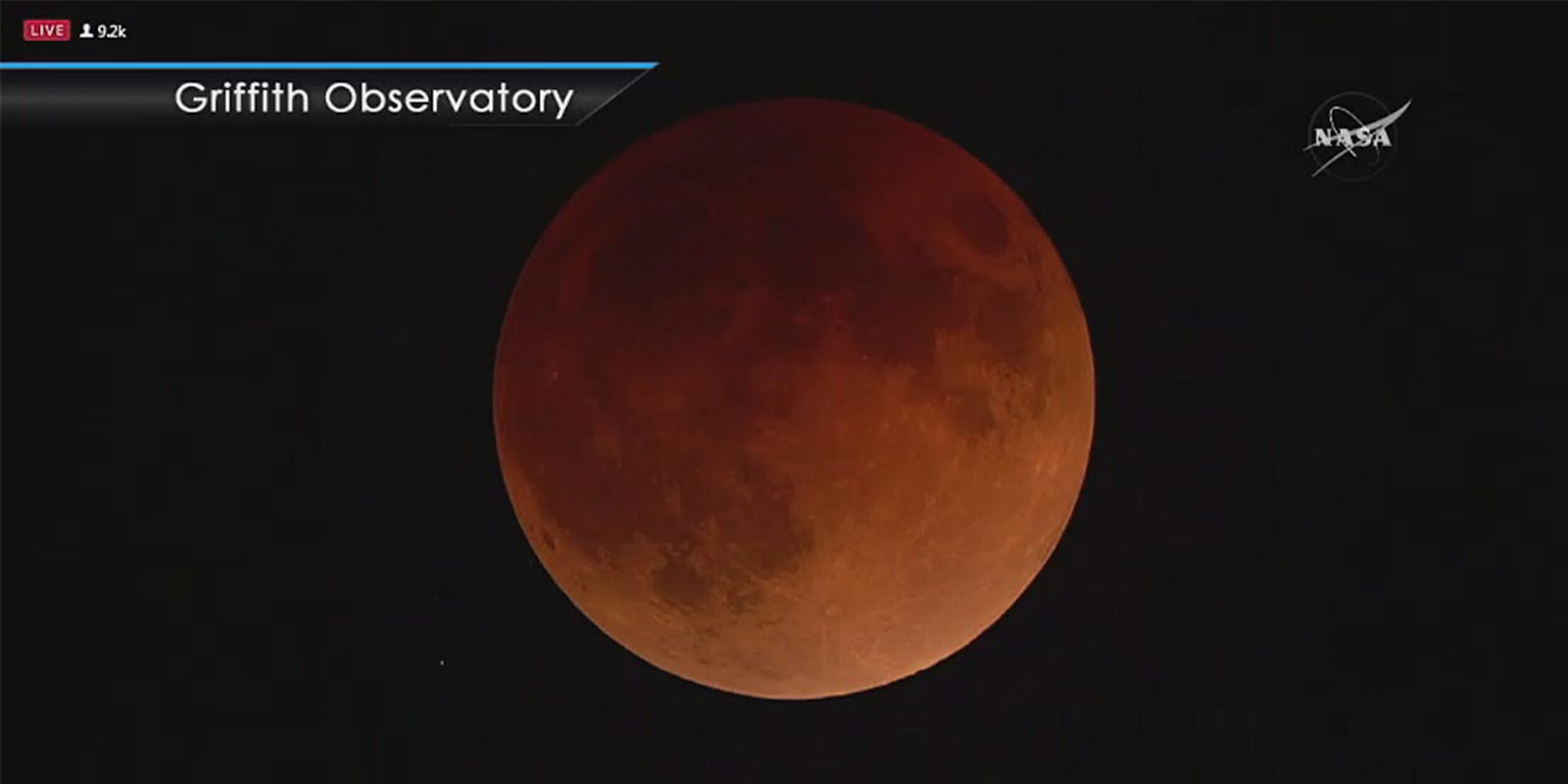If you were up early enough Wednesday morning you may have caught a lunar event the world hasn’t seen in more than 150 years. If you didn’t, NASA helpfully broadcast it for the world to see.
NASA called the lunar event a Super Blue Blood Moon, which is the convergence of three lunar events at once: a blue moon, which is when two full moons occur in the same month; a supermoon, which is when the moon’s orbit brings it closer to Earth and appears larger; and a total lunar eclipse, in which the earth blocks the sun and is also called a blood moon because the moon turns red during that time.
While those on the East Coast could view the Super Blue Blood Moon starting at 5:51am, gazers further west had a far better view as well as a longer one before the sun rose. For those who couldn’t view the lunar event, NASA provided a handy livestream that checked in with telescopes and observatories all over the country as the Super Blue Blood Moon took place.
LIVE NOW: Watch views of the #SuperBlueBloodMoon from multiple telescopes. Take a look: https://t.co/a5ScGDXhQu
— NASA (@NASA) January 31, 2018
And it’s starting! On August 21, 2017, the Moon blocked the Sun and cast its shadow on the Earth. Now during the lunar eclipse, the Earth is blocking the Sun to cast its shadow on the Moon. #SuperBlueBloodMoon @NASASun @NASAEarth pic.twitter.com/PWdwpT5BwZ
— NASA Moon (@NASAMoon) January 31, 2018
The view varied based on where the telescopes were located and how far into the event you tuned in, but one point viewers could clearly see a large red moon outside their windows or from their laptops.
Notice the red tint? It’s a #BloodMoon caused by Earth casting its shadow on the Moon during the lunar eclipse that’s happening now. For the U.S., this eclipse is best viewed on the West Coast, or on our live stream here: https://t.co/RcESL4Soyk #SuperBlueBloodMoon pic.twitter.com/jq294l6esu
— NASA Moon (@NASAMoon) January 31, 2018
Check out this view of the partial lunar eclipse from @NASAArmstrong! The Earth is currently moving out from between the Sun and Moon. Continue watching the #SuperBlueBloodMoon online here: https://t.co/871gP0Ic7u pic.twitter.com/EGEc3eguHT
— NASA Moon (@NASAMoon) January 31, 2018
Even some of NASA’s other social media accounts got in on the fun.
We’re not usually ones to throw shade – unless, of course, there’s a #lunareclipse.
— NASA Earth (@NASAEarth) January 31, 2018

Sorry, @NASAMoon! Read more about the science behind the show here: https://t.co/lXB9Z2zTAe pic.twitter.com/arS4Q3u43B
You can check out the full livestream on Periscope.
Fortunately, the next major event isn’t too far into the future. According to NASA, the next multi-lunar event—a supermoon and a lunar eclipse—will take place on Jan. 21, 2019.


